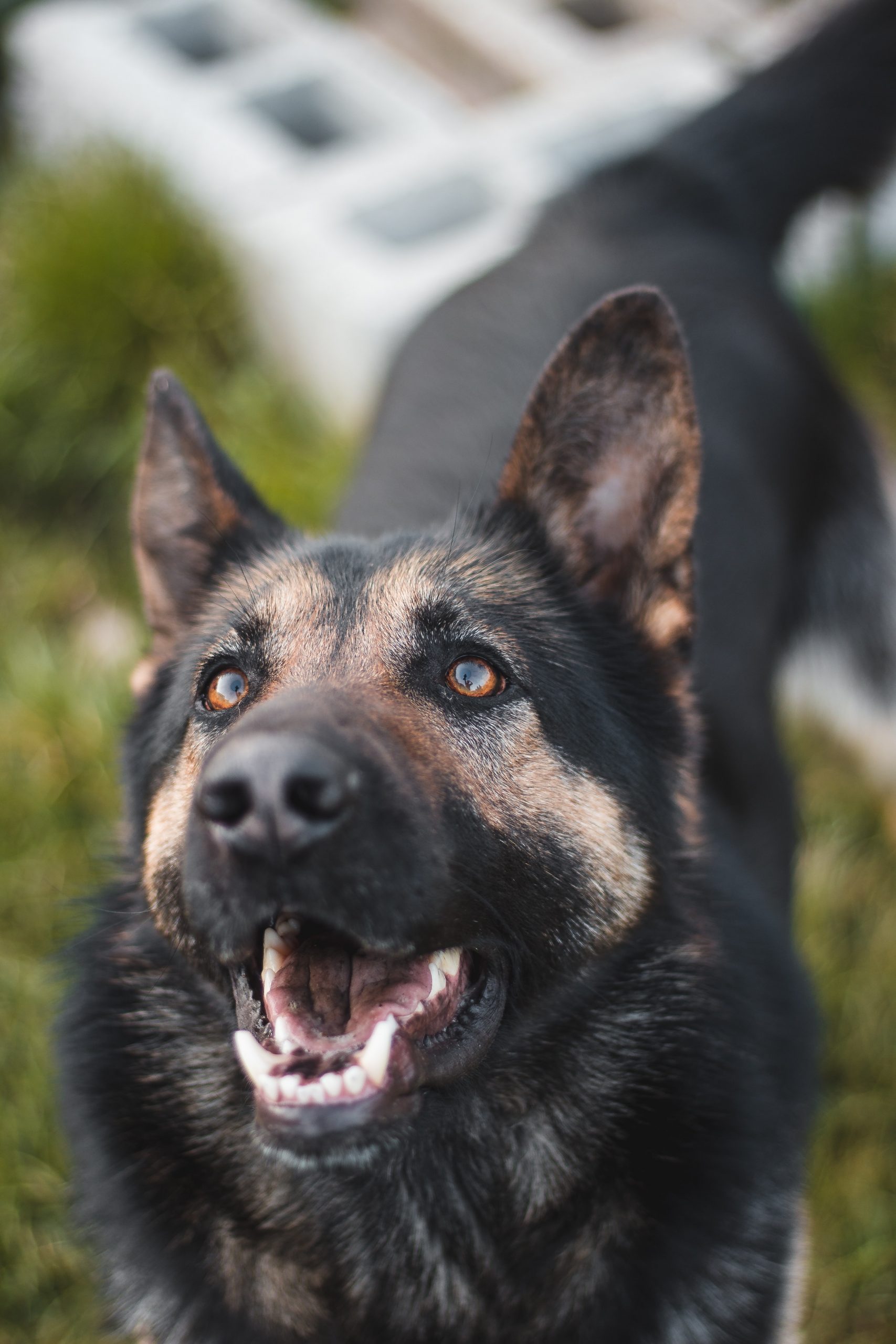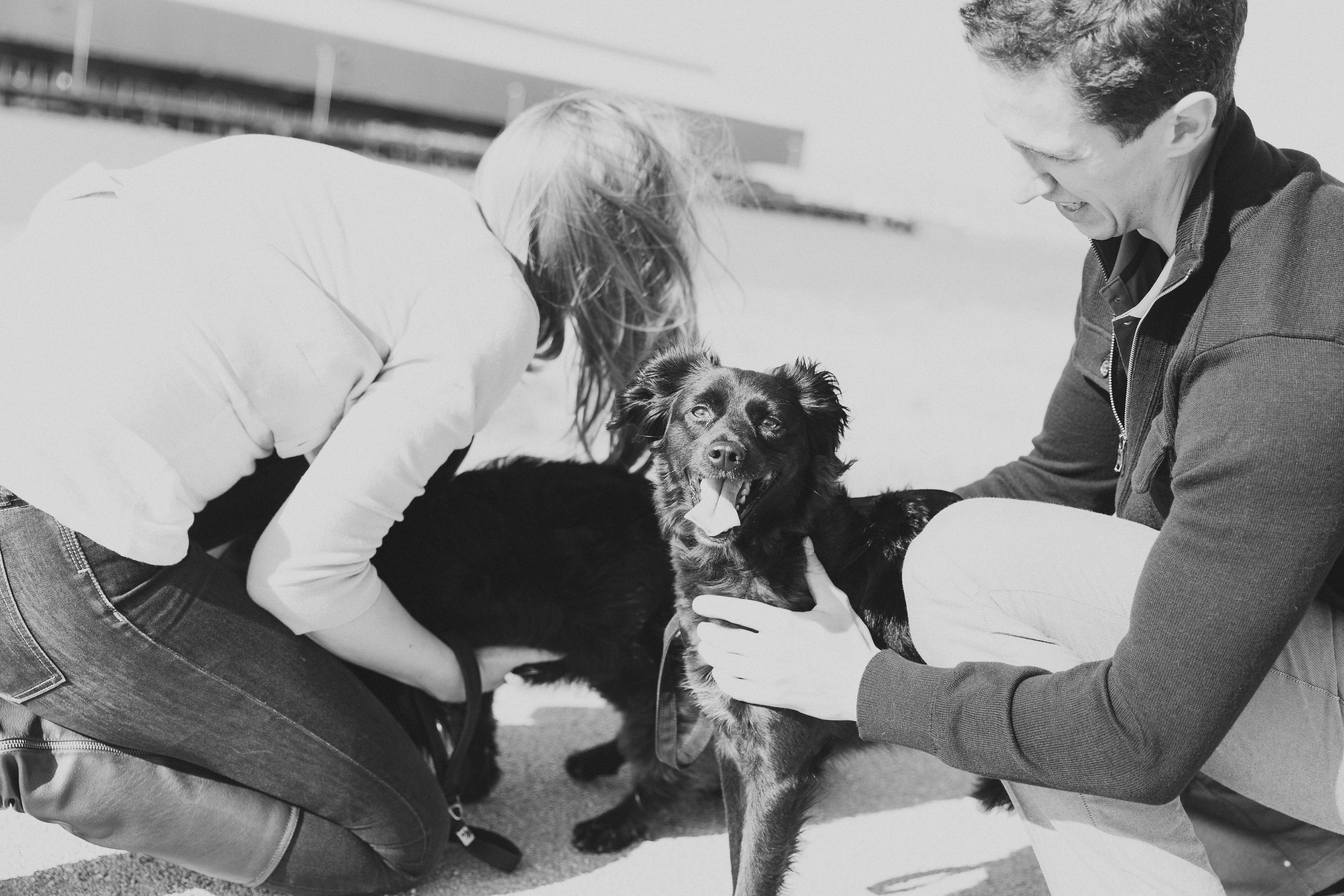Just like people, dogs use verbal and nonverbal means to communicate. Barking is the most commonly displayed means of canine communication. Barking is defined as short, abrupt, relatively loud vocalizations that are variable in frequency and often repeat rapidly in succession.
To help you understand your dog, here’s a breakdown of some of the most common reasons he might bark:
He is Excited
Excitement barks happen when you first come home or when he hears the rattling of the treat canister or the familiar sound of you taking his leash out of a drawer. When dogs are in pack settings, they will yip and vocalize to communicate excitement with one another. These excited barks are typically high-pitched and intermittent.
If your dog is barking because of excitement, his tail will typically be wagging, and his body language will be positive and alert (head up, ears up, happy disposition).
He is Bored
When dogs are bored, they may bark to get your attention or to try to engage you in playtime. Often a dog will attempt to bring you a toy, paw at you, or bark while looking at you. These barks are usually lower in tone and happen in singular bursts or barks. Dogs barking for attention will generally be alert, with a tail that is up and wagging, and they will be looking at you.
If your dog is bored or lacking in mental or physical stimulation, their bark may be more repetitive, and their ears may be drawn back with a straight tail. When your dog barks AT you, his body language is less alert and more relaxed. He might seem to be “testing” or questioning to see what your response will be.
Sometimes a dog may lower themselves down into a bow (front legs bent with their bottom in the air) to signify they are ready for fun.
“If your dog is barking because of excitement, his tail will typically be wagging, and his body language will be positive and alert (head up, ears up, happy disposition).“
He is Surprised, Fearful, Anxious or Displaying Dominance
Your dog might bark when startled by something, like a quick motion nearby or a sudden sound. The bark is at a high pitch and almost involuntary, like a person who yelps when startled. Because of the unanticipated nature of this bark, your dog’s posture will vary. The surprise bark is usually a singular bark but might induce more barking, depending on what your dog is reacting to.
Your dog might exhibit what is described as defensive barking following a surprise or might just start barking defensively when they recognize certain stimuli. If a known reactionary element is nearby (like an unknown dog or person) is close your dog could bark with a deep tone and growl. Defensive barking is continuous and unyielding..
When a dog is anxious or afraid, they may bark, but their body language will show their emotion. Their tail will be between their legs, low hanging head, fur on end, and hackles raised.
He is in Pain
If your dog is in pain, his conditioned response might be to bark. This bark would be to signal to their ancestral pack that they need help. The bark is typically high pitched and yelp-y, like a staccato note. If it repeats, it will likely trail off and soften.
If your dog barks or yelps when you touch a part of their body, something might be causing them pain. If your dog barks before your hand reaches them, they may be anticipating the pain they will feel if you manipulate that area.
If this occurs, and you can’t find the source of your dog’s discomfort, be sure to visit your veterinarian to get to the root of your dog’s pain.

Photo by Lukáš Vaňátko on Unsplash
If you enjoyed this post, you should read Hawaii Humane Society Offers Shelter Dog Field Trips for Tourists here.
Are you able to decode your dog’s bark?
